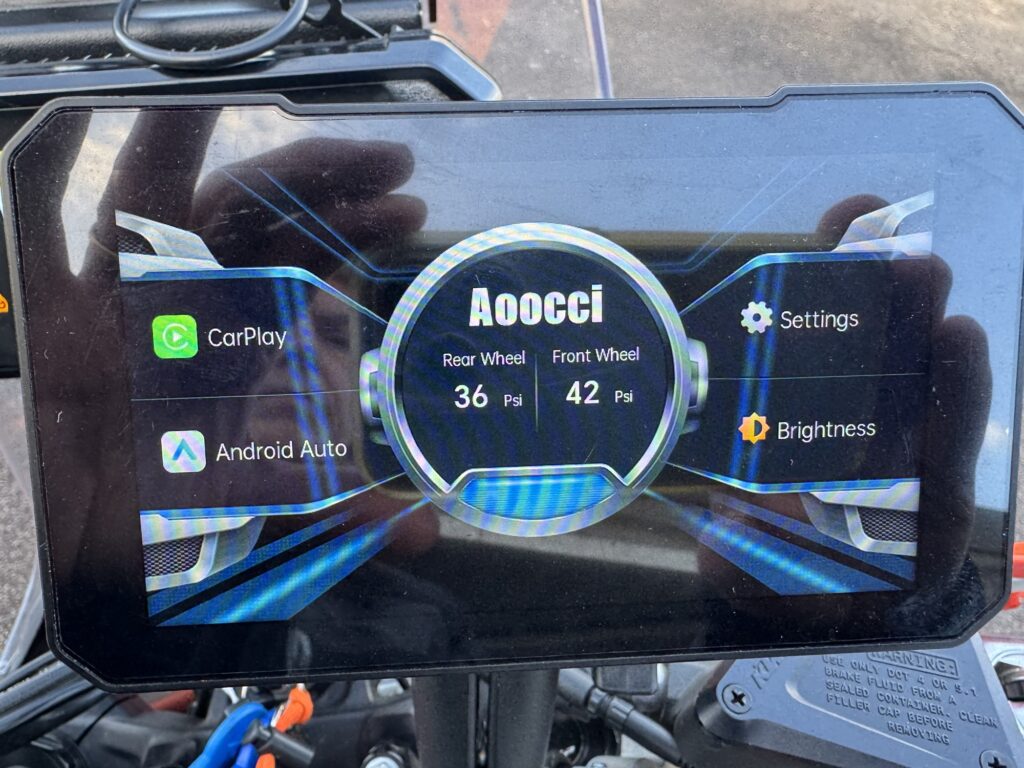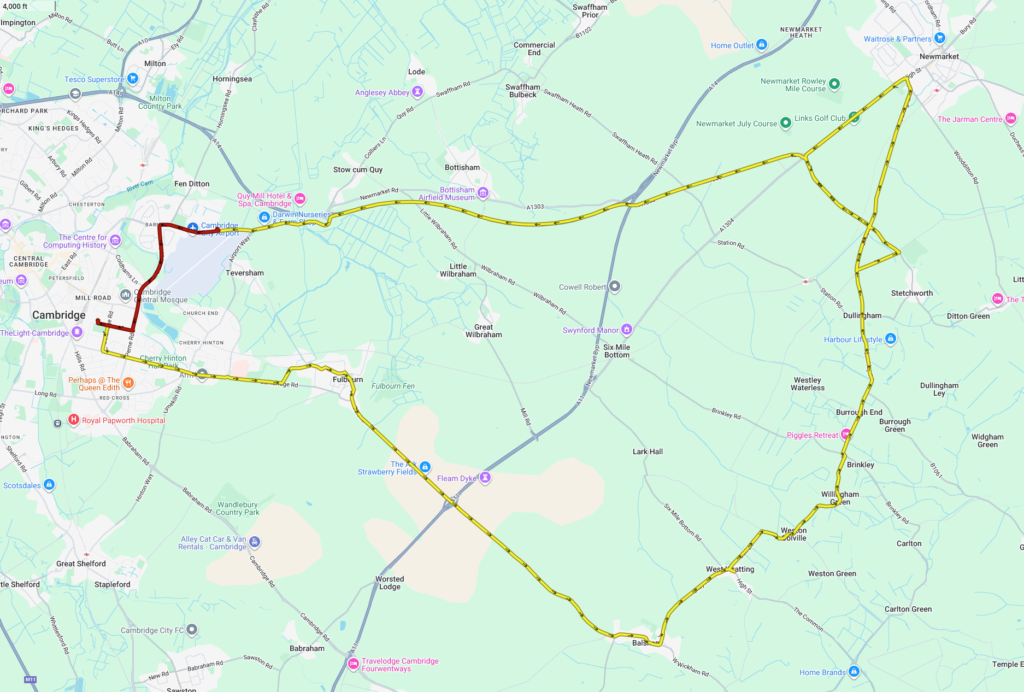I’ve been looking for an alternative to Garmin’s GPS universe for some time. The Garmin ecosystem seemed to be getting a little stale, with motorcycle equipment just one part of a huge range of (highly priced) devices, at the same time that Google Maps was becoming effortlessly reliable and useful – it really does save your previous searches etc. Added to that we have seen the development a number of moto-specific navigation apps designed for smartphone that should, in theory, transfer well onto Carplay. The particular app that I’ve signed up to is MyRouteApp.
My first attempt at escaping the Garmin ecosystem was trying, by which I mean spending an awful lot of money and selling again at a significant loss, a Thork Racing DMD T865 Android tablet. I didn’t get on with it for reasons I go into here.
When, as a result of some targeted promotional YouTube vids by the company that make Aoocci carplay units, I discovered one of these devices for less than £100, I was interested, like a lot of people. On their website the company claims to have been founded by a lone tech enthusiast working in his garage in HongKong. But there are many fake-origin stories put up by companies on the net, that its hard to know. (Run a Google image search on the photo of the ‘founder’ on some sites and you will often find that it is a stock photo used in a variety of other fake sites were the person in the photo is given different names.) Anyway, regardless, the company makes units that do no more than display your smartphone’s navigation and other selected apps on a small GPS-looking screen that you can fix in various places on your motorbike. I wouldn’t mind betting that many other buyers, like me, thought – if this turns out to be a pile of crap, I’ve only lost £80 or so…
So what is it like? So many of the sponsored promoters sing its praises.
My version came only with wiring to hard-wire to the bike, in my case via a power distribution unit which made it simple for me. I would have connected it in that way anyway. The only problem was that without a usb connector for its proprietary connection you can’t experiment with it apart from when its connected to the bike and the bike turned on. And if things go wrong with the unit, as they did for me and, by the look of it, many other owners, you have to be able to plug it into a PC to update the firmware. Sorry no Macs – only clunky software for Windoze. Journey number 1: yes it works fine, using Google Maps – result. End of journey number 1: let’s connect it to the two supplied tyre pressure monitors – nice idea in theory – just to see how accurate it is. This is where the device stopped working for me and others. Updating its firmware is possible, and the company do have an update ready but its implementation is not straightforward though doable, eventually. So, back up and running let’s try again. The device starts up, works as before but seems to have gone off the idea of talking with the TPMS.
My second investigation was seeing how MyRouteApp would run via this device. Its smartphone implementation is good, though I have not used it because I have never mounted my iPhone on the bike. When connected to CarPlay I discovered that it has a limited usability. First here’s a screenshot from MRA on a smartphone. You can move the map around on the touchscreen nicely.
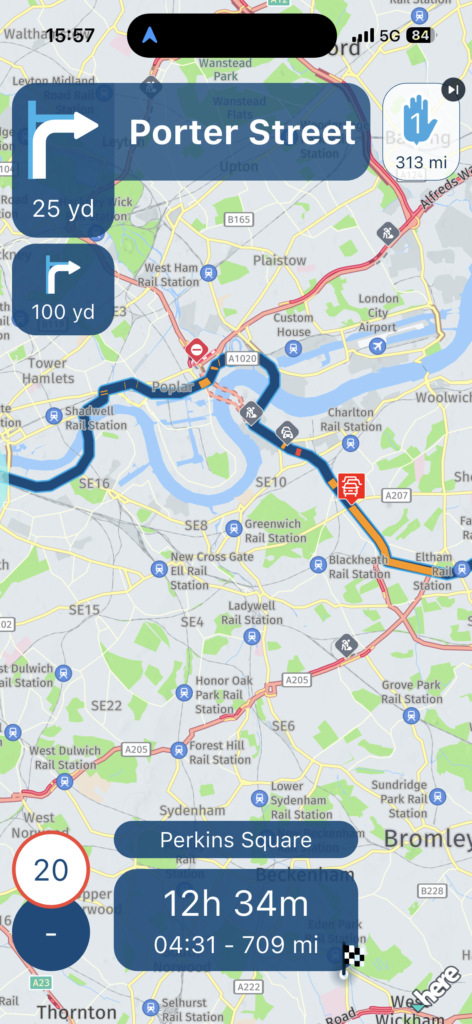
Now here is the implementation on the Aoocci device, using Carplay. The first screen shows my list of folders of routes I have previously plotted with MRA presented to me, the middle shot is what you see when you click on the search icon from the first MRA screen you see and the right-hand screenshot is the working map page from MRA. When you have Google Maps on the Aoocci screen you can move it around with your finger (if your gloves are not too thick) but with MRA you cannot move it. You have to tap on some direction arrows. This seems a limitation to me.
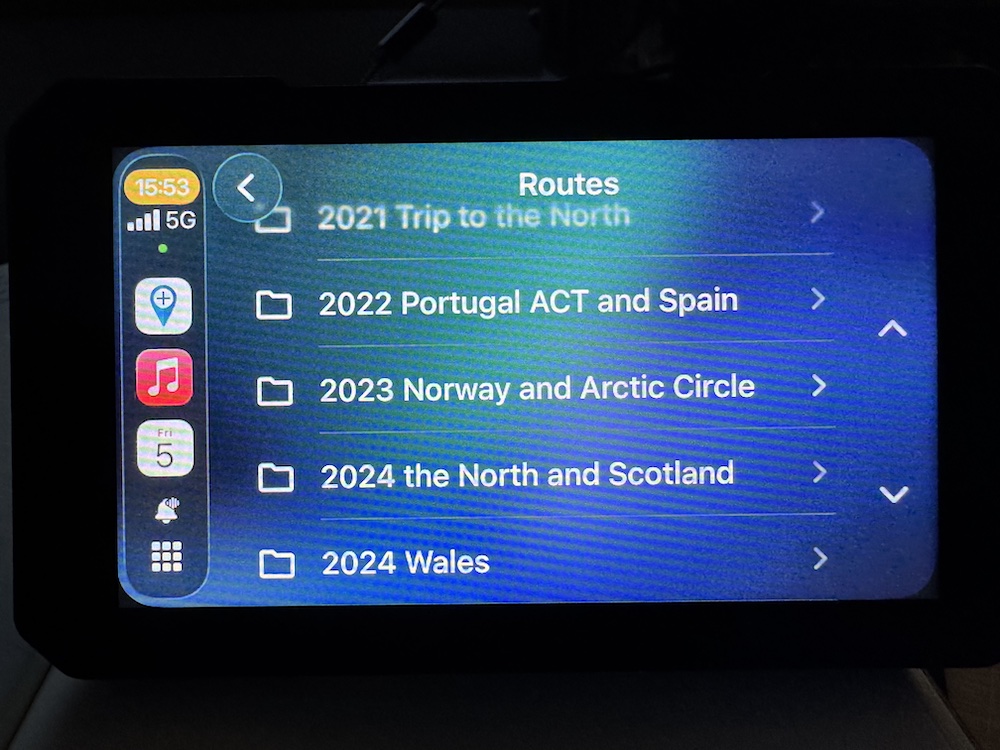
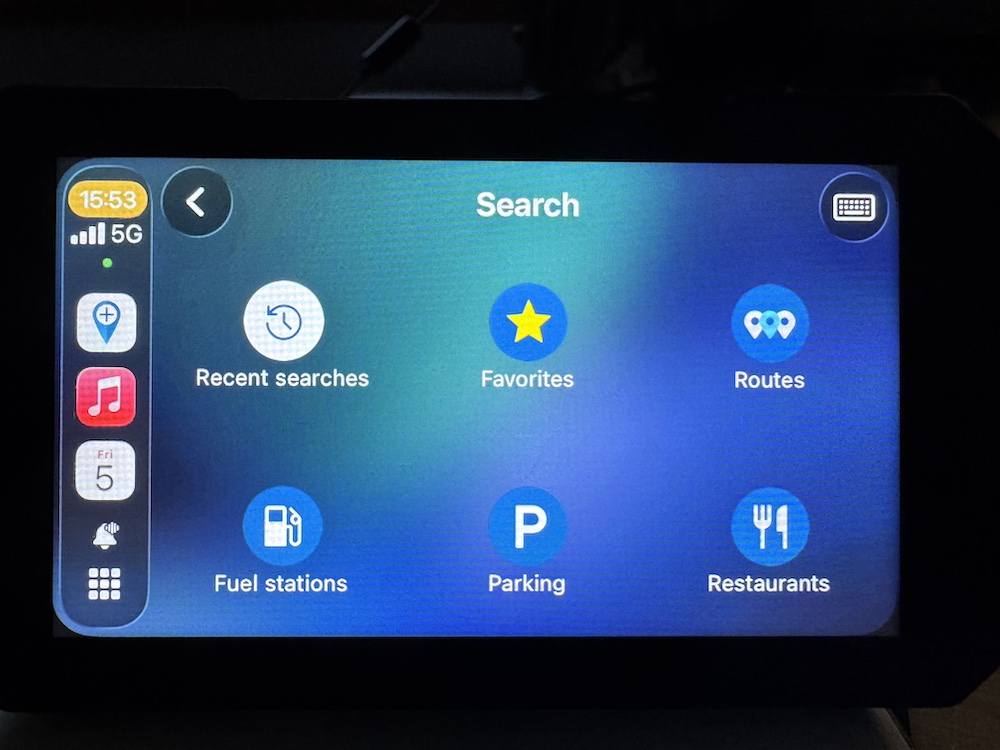
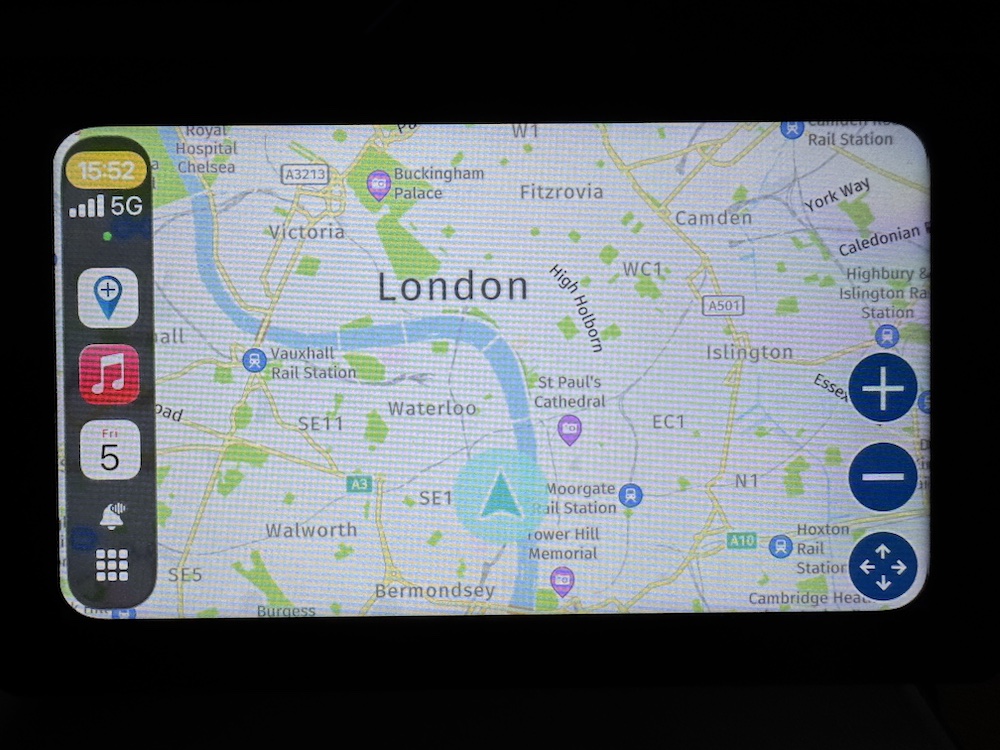
Obviously I like MRA’s ability to let you design a route quite simply and you could be guided by your smartphone. I am not sure how this is going to work using Carplay and the Aoocci device. I like the MRA ecosystem so want to persevere a little before trying something else.
I forgot to mention that I found the connection bracket that was supplied with the Aoocci unit was of limited use so I glued a RAM mount ball head that I had onto the back of the Aoocci mount and could fix it easily on an adjustable RAM mount.
I also forgot to say that perhaps the biggest discovery in this has been noise-cancelling Apple Earbuds (Pro 3 or similar). I have found that these do an amazing job of cancelling motorcycle and wind noise while allowing instructions from Google Maps to remain crystal clear. They fit very well under a helmet and don’t fall out when you take it off. The only slight downside, particularly when travelling and camping, is that they would be yet another thing to have to charge up at the end of the day.
Update: now that I’ve tried using a route planned on MRA to navigate me on a thirty mile loop out to Balsham and Dullingham I feel a bit more positive about the set up and using MRA to navigate around a nice ride. All works well. It even makes a good effort to rescue you when you have gone off the route. The map is clear and the voice prompts are in good time. Once back I even managed to get Aoocci to read the tyre pressures though somehow they are the wrong way round. It showed me that my front tyre lost a lot of pressure – down to 18psi before I pumped it up again. I wonder what has happened to it.
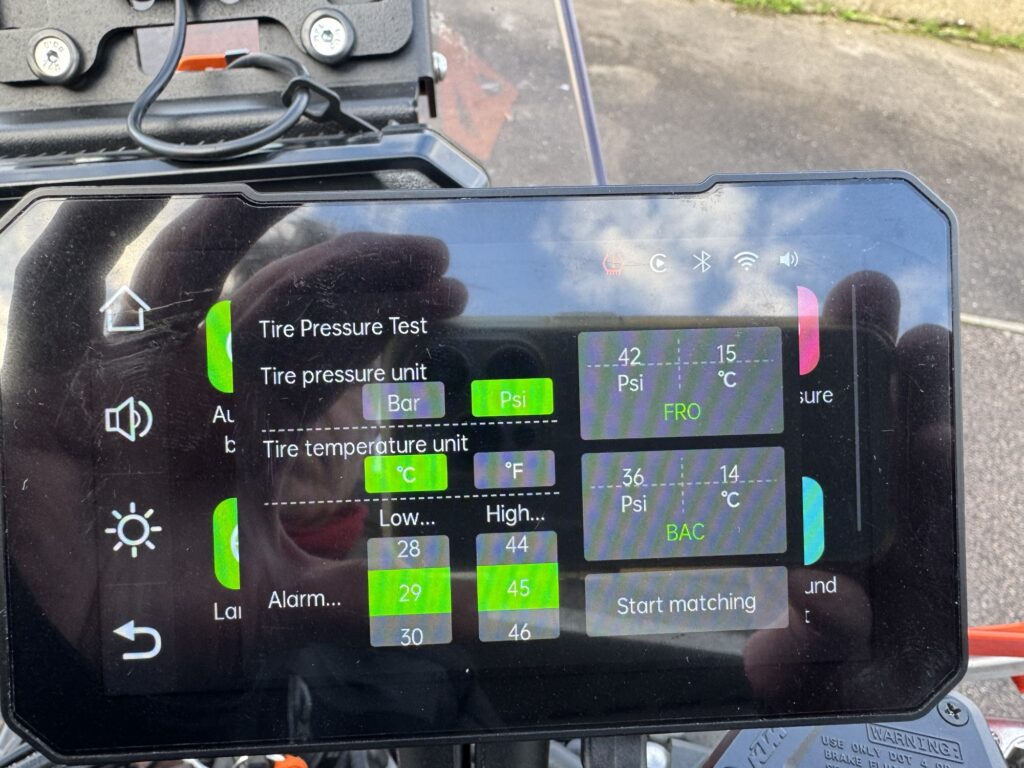
Also displayed on the start up screen
